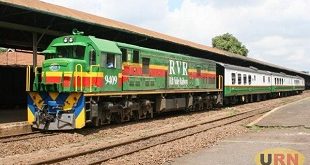Of course, political balkanization has got implications for defence and strategic security or otherwise of the concerned peoples. China has now joined USA, Russia, and India as a space science country. This enhances her capacity of strategic security. Africa is totally lacking in that area. The war technology gap that was pioneered in 1337, when Edward III of England first used gun-powder against Scots, between Europe on the one hand and Africa, Asia, the Americans as well as Austro-Asia on the other hand, has been widening ever more and more, particularly for the Africans that have remained stagnant.
Therefore, the foresight by the Lagos Action Plan, which pointed out the need to be organized in the building blocs for trade for different zones of Africa in order to tackle this balkanization, was correct. Integration is one of the major therapies for Africa which has been in decline since 1785 BC when the Hyksos first invaded and conquered Egypt, the African cradle of human civilization. Integration should have two dimensions – economic and, where possible, also political integration. In East Africa, we are aiming at both – political and economic integration.
The people of East Africa have, for decades, been yearning for an East African Federation that would deal with both political and economic integration. This is the ultimate goal of EAC. There are those who ask the question: “Why EAC and COMESA? This is the answer. EAC intends to travel further because the peoples are either similar or very compatible and are aiming at also the political integration, leading to the Federation of EA.
COMESA, on the other hand, right from the beginning, aimed at economic integration because political integration at the continental level is quite unrealistic. Trade, however, is not only realistic, but necessary. This is why Uganda never joined SADC when it was formed by our fellow freedom fighters that had been active in the anti-colonial struggle.
We only saw those two dimensions – the political and the economic. Since SADC did not make the political integration dimension explicit, we did not see the need to duplicate the trading arrangement mechanism. I am glad that now COMESA, EAC and SADC are engaged with one another under the tripartite efforts.
COMESA has done well and will even do better. As you heard, the trade volumes among COMESA members are of the magnitude of US$ 18.8 billion. This will grow if we could deal with infrastructure – the roads and the railways. I want to see a rail link with South Sudan, a rail link with Kisangani in Congo, a rail link with Gisenyi in Rwanda and the up-grading of the East African Railway system to a standard gauge. We need railway links with Ethiopia and Somalia from Kenya.
In the end, we need to conclude the agreement on the African Common market. In 2077, the population of Africa will be three billion. We should create that unified trading space for our grand children and great-grand children. A big market is not only good for giving our producers greater markets for their products (goods and services). It is also good to enable us to negotiate with others (USA, EU, China, Russia, India, South America, Japan, ASEAN, etc) for access to their markets.
The Ugandans (Banyankore) say: “Ija turye kumwe biri aine eki akurebireho” ― the one who invites you for a meal does so because he/she knows that you have got capacity to reciprocate. Indeed, from the Bible, in the Gospel of St. Luke 8:18, it says: “…For whoever has, more will be given to him; and whoever does not have, even what he thinks he has will be taken away from him…”
The one who has something will get more benefits. In this case, the stronger you are, the more you get. We are, therefore, on the right road.
I thank you very much.
 The Independent Uganda: You get the Truth we Pay the Price
The Independent Uganda: You get the Truth we Pay the Price



